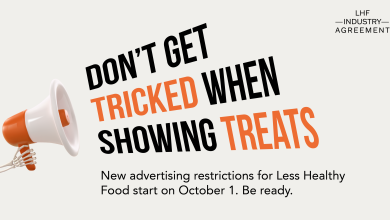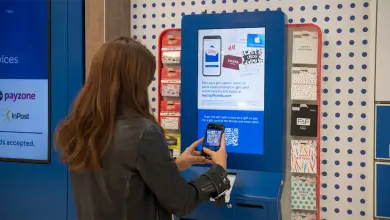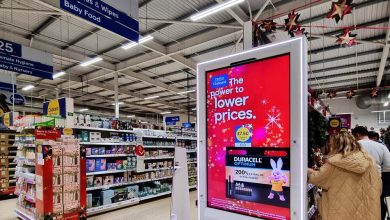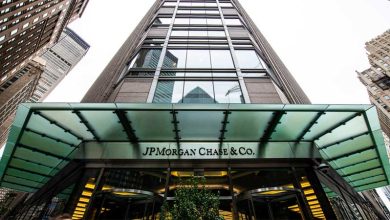By Helen Johnson.
From January 2026, any creative that features products classified as Less Healthy Food and Drink (LHF) – essentially HFSS products – will be banned from advertising on TV (including streaming services) before 9pm, and across all paid online advertising regardless of time.
After months of uncertainty, it’s now confirmed that brand-led campaigns that don’t show identifiable LHF products will be exempt. But let’s be honest: how many FMCG ads don’t show the product? This exemption might soften the blow slightly, but it still leaves a gaping hole in the media strategies of some of the UK’s biggest advertisers.
With the government encouraging early compliance from trade bodies and media owners including the Advertising Association, ISBA, IAB, plus major broadcasters and publishers, from October 2025, brands across multiple categories are facing the loss of their most effective reach channels. The clock is ticking – and fast.
Amid all this disruption, attention is rapidly turning to where advertisers can go next. Many are eyeing digital out-of-home (DOOH) and digital audio as smart alternatives. For brands focused on product-led campaigns, the search is on for additional channels that can deliver both scale and relevance. This is where retail media is emerging as a high-impact solution, not just as a performance tool, but as a way to sustain awareness and reach.
DOOH and audio are effective, but retail media completes the picture
While DOOH and digital audio (like podcast ads or Spotify placements) remain untouched by the LHF guidelines, they will undoubtedly see a surge in demand as brands look to maintain reach. But with every brand eyeing the same limited space, we can expect to see inflated costs and limited inventory.
These channels play a critical role in any brand campaign, but they aren’t one-size-fits-all. They’re powerful for reach and awareness, but brands may need to think broader, particularly when it comes to more product-led campaigns.
That’s where retail media comes in. Not as a replacement, but as a vital complement. With its ability to deliver both scale and in-the-moment relevance, retail media reaches shoppers when and where it matters most: right at the point of purchase. And with its growing brand-building capabilities, it’s a channel that works in tandem with DOOH and audio to help brands drive both frequency and impact across the funnel.
The untapped power of in-store retail media
Retail media has evolved well beyond just driving conversion. It now offers both reach and brand-building power – driving awareness and consideration, particularly in-store. This is exactly what brands are at risk of losing under the new LHF restrictions.And it’s not just about volume. Recent research by Co-op and Lumen shows in-store retail media drives 2x the visibility, 3x the attention, and 4x the brand recall compared to large-format environments.
A separate MESH and SMG study found that in-store activations led to a 5-6× lift in brand awareness. These results underscore a vital point: retail media is a powerful solution for driving awareness and saliency for brands impacted by the LHF restrictions.
Between Tesco (4,000 stores), Co-op (2,500+), Sainsbury’s (2,000+), Asda (2,000+), and Morrisons (500), retail media reaches millions of shoppers weekly at the point of purchase, offering scale and visibility where it matters most.


Omnichannel campaigns, powered by data
What’s changed, and what makes this moment so critical, is that in-store is no longer siloed. It’s part of a connected retail ecosystem that includes digital screens, radio, magazines, CRM, experiential activations, proximity OOH, and more. With unified first-party data and increasingly sophisticated measurement tools, brands can now run full-funnel, omnichannel campaigns that deliver reach, relevance, and results – all within the retail media environment.
And retailers are already moving fast. Tesco has already started planning LHF-compliant Christmas campaigns. Many retailers are preparing to align with the voluntary ban from October 2025. If you’re waiting until January 2026 to act, you’ve already missed the boat.
There’s no time like the present: test and learn now
Brands that wait for the restrictions to hit will already be playing catch-up. The winners will be those who act now: testing, learning, and putting retail media at the heart of their new media mix.
Retail media’s ability to deliver both performance and brand growth makes it one of the only channels with the flexibility and effectiveness to substitute TV and online, while remaining compliant. Whether it’s digital screens, immersive experiential activations, or in-store sampling, retail media brings campaigns to life right at the point of consideration and purchase.
Yes, LHF restrictions pose a challenge. But they also force a long-overdue shift in thinking, especially about where brand-building actually happens. As brands embrace the power of layering complementary channels, DOOH, audio and retail media are set to play a critical role in maintaining reach and awareness for LHF-impacted brands.
 Helen Johnson is managing director, Capture, part of the SMG agency network.
Helen Johnson is managing director, Capture, part of the SMG agency network.






